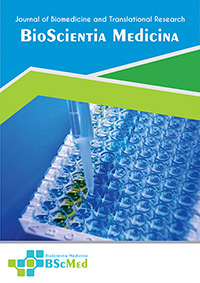Main Article Content
Abstract
Background: Neonatal asphyxia, a critical failure of gas exchange during the perinatal period, remains a primary cause of neonatal mortality and long-term neurodevelopmental disability worldwide, including hypoxic-ischemic encephalopathy (HIE). Its etiology is a complex mosaic of interconnected factors. Understanding this intricate risk profile is essential for developing effective prevention and intervention strategies. The aim of this study is to systematically review and synthesize recent evidence (published 2019–2025) on the spectrum of maternal, fetal, intrapartum, placental, and systemic risk factors associated with neonatal asphyxia.
Methods: This systematic review was conducted following the PRISMA guidelines. A comprehensive literature search was performed in PubMed, ScienceDirect, and Google Scholar for observational studies published between January 1st, 2019, and April 1st, 2025. Dual reviewers independently conducted study selection, data extraction, and risk of bias assessment using the Newcastle-Ottawa Scale (NOS). Due to significant clinical and methodological heterogeneity, a narrative synthesis was performed.
Results: The search yielded 870 articles, from which 13 observational studies met the inclusion criteria. The synthesis of these studies revealed a consistent and powerful link between neonatal asphyxia and a wide array of predictors. Key factors included maternal comorbidities (hypertensive disorders), prenatal maternal psychological stress, intrapartum complications (prolonged labor, meconium-stained amniotic fluid), placental pathology (maternal vascular malperfusion, meconium-associated changes), fetal characteristics (low birth weight), and crucial systemic factors, such as maternal immigrant status and sociodemographic disparities. Predictive models developed in two of the included studies demonstrated good discriminative performance in identifying high-risk pregnancies, offering potential for clinical application.
Conclusion: Neonatal asphyxia arises from a complex interplay of risk factors that span the entire perinatal continuum, from pre-conceptual maternal health and systemic inequities to acute intrapartum events. Effective mitigation requires a multi-pronged approach encompassing comprehensive antenatal care that addresses both physical and mental health, vigilant intrapartum monitoring, and systemic efforts to ensure equitable access to high-quality perinatal care. The integration of validated risk prediction tools into clinical practice holds significant promise for reducing the global burden of this devastating condition.
Keywords
Article Details
As our aim is to disseminate original research article, hence the publishing right is a necessary one. The publishing right is needed in order to reach the agreement between the author and publisher. As the journal is fully open access, the authors will sign an exclusive license agreement.
The authors have the right to:
- Share their article in the same ways permitted to third parties under the relevant user license.
- Retain copyright, patent, trademark and other intellectual property rights including research data.
- Proper attribution and credit for the published work.
For the open access article, the publisher is granted to the following right.
- The non-exclusive right to publish the article and grant right to others.
- For the published article, the publisher applied for the Creative Commons Attribution-NonCommercial-ShareAlike 4.0 International License.





